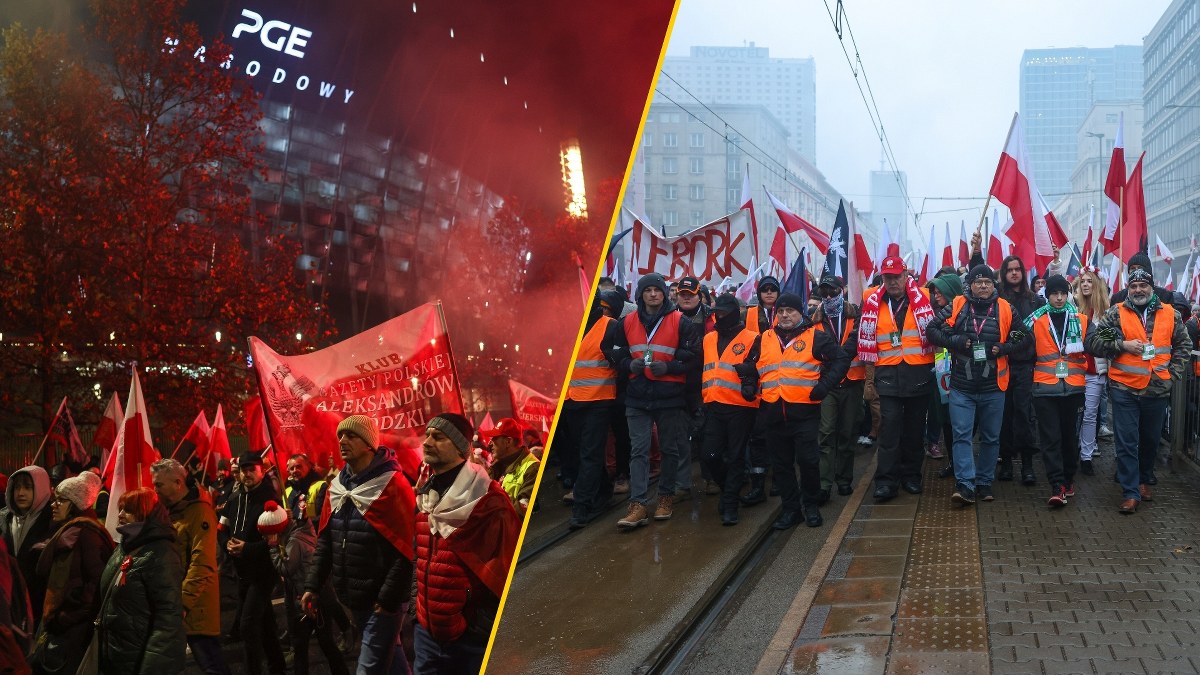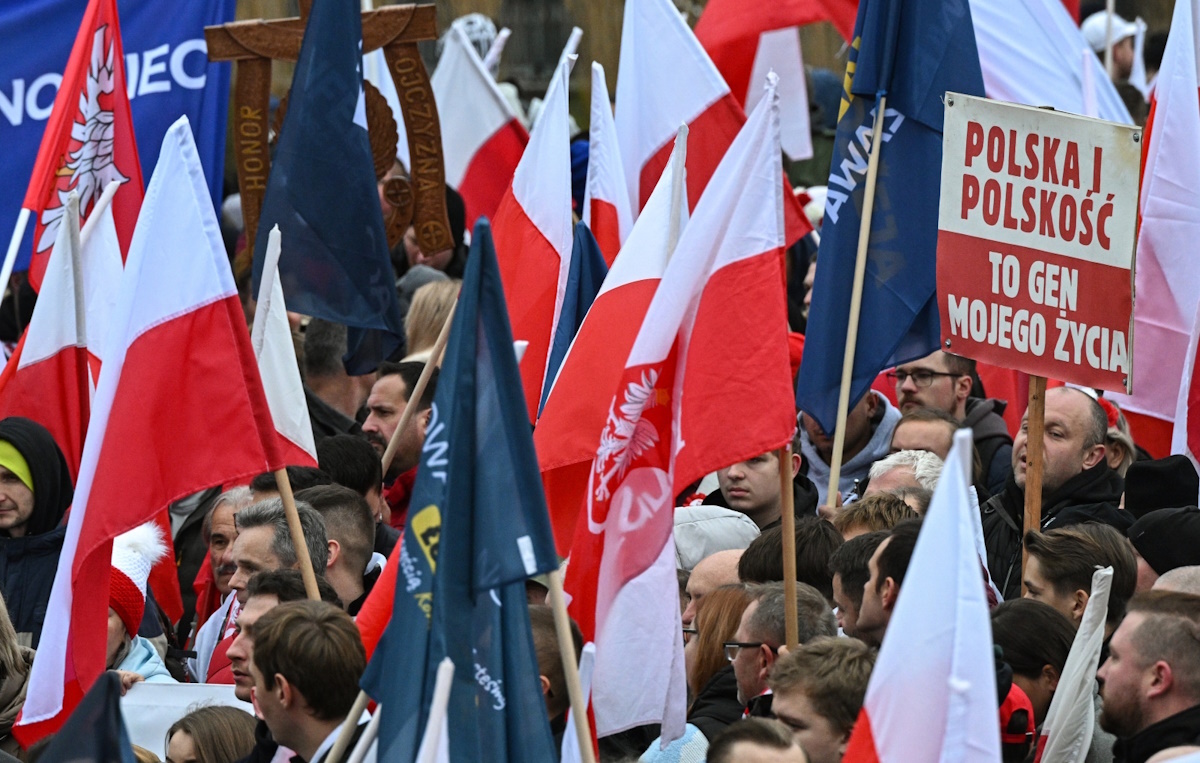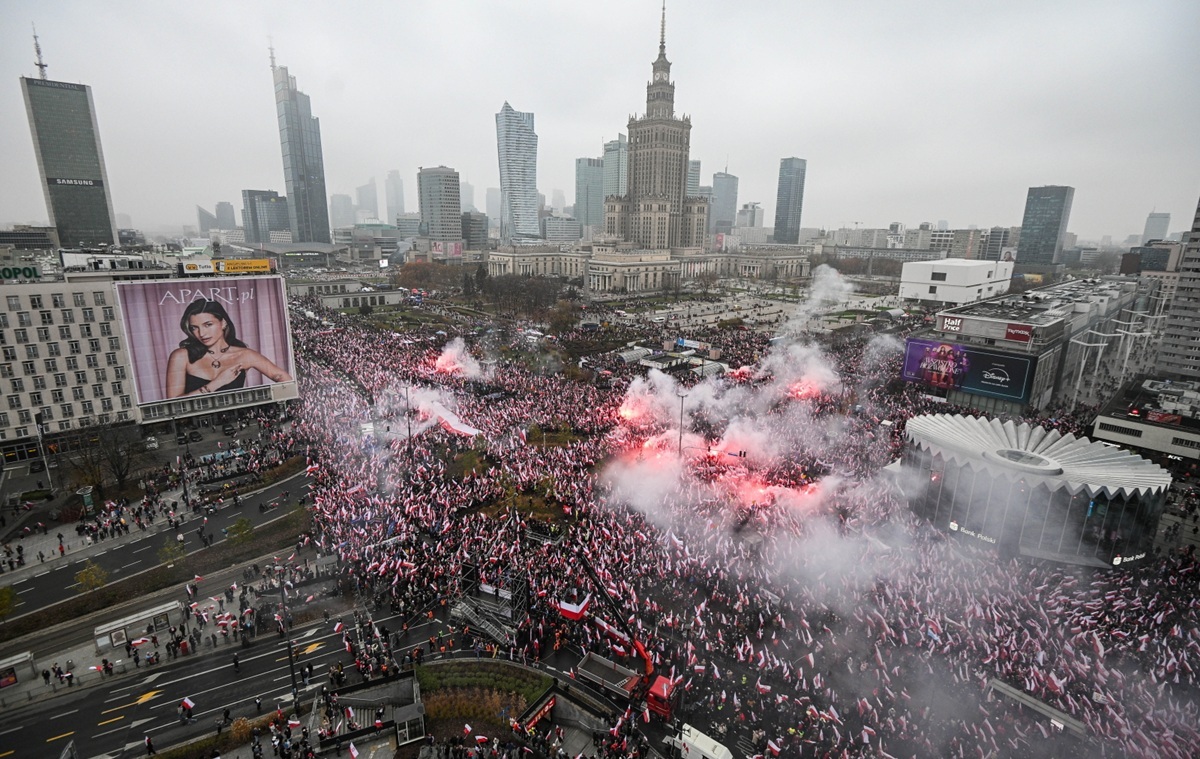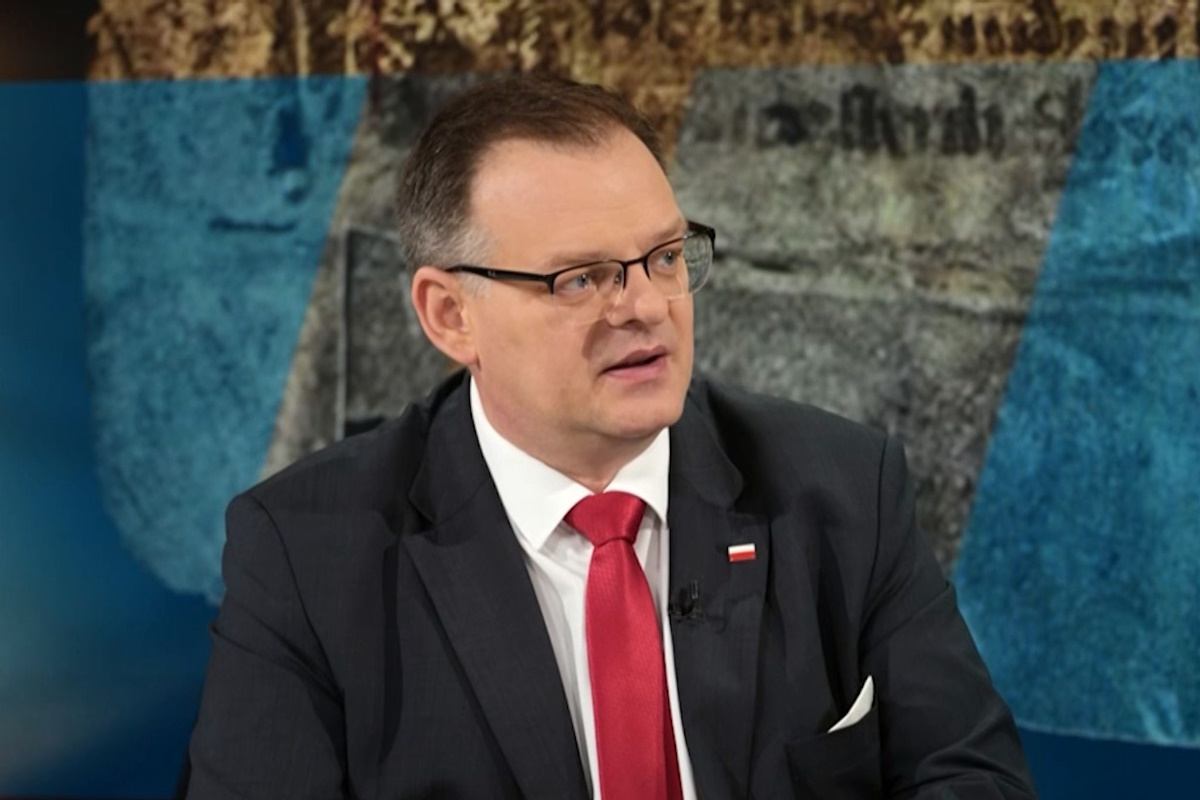It seems like a while has passed since we were fastening our seatbelts in AWACS, and here we were – already landing at the airport. Yet, it has been seven hours since take-off. There was so much going on onboard that I did not notice the passing time.

NATO airbase in Geilenkirchen in the west of Germany. This is where Boeing E-3A aircraft owned by NATO Airborne Early Warning & Control Force (NAEW&CF) are stationed. If it were not for the huge circle-shaped antenna mounted on the platform’s hull, you might think: nothing unusual, only a few details (apart from a huge inscription: NATO) distinguishes it from a passenger plane. However, the operational value of this aircraft cannot be overestimated. It has been stuffed with sensors fitted in special onboard cabinets, they are also placed in the undercarriage and on the fuselage. “What is their range?” I ask just before boarding. “I can’t say that, but you can imagine their power. If AWACS operated over central Poland, we could track all objects in the airspace of our country and beyond,” says ‘Sly’ [at the request of the NATO E-3A Component, we do not give the names of soldiers], a tactical director, who is responsible for the entire crew and the mission. He is one of the 21 Poles who serve in the NATO E-3A Component, and agreed to take the readers of Polska Zbrojna onboard this unusual aircraft.
Long Hours in the Air
The aerial early warning and guidance system was developed in the 1970s. From the very beginning, its task was to detect and track objects in airspace and guide fighters to the target. Initially, 12 countries were involved in the program, e.g. USA, Turkey, Canada and West Germany. With time, in 2007 also Poland joined it. The NATO Airborne Early Warning & Control Force (NAEW&CF) was established in 1980. Its headquarters was in Mons, Belgium, and in 2015 it was moved to Germany, where it still operates today.
At the airport of the NATO base in Geilenkirchen, we see several E-3A aircraft. Sly explains that there are 14 of them in total. Technicians show up, while early in the morning we are waiting to board the aircraft. They check all systems to make sure the aircraft is ready for departure. Another Pole works with them, JWO ‘Teo,’ who is a radar technician responsible for the effective operation of the most important element of the AWACS system. “Before the aircraft takes off, we check the radar equipment in the undercarriage and inside of the machine,” explains the technician. It takes him about an hour. The result of his work did not bring surprises, but the technicians detected the malfunction of the hydraulic system. Ground handling specialists quickly appear on the spot. “If it’s something serious, we may not fly,” warns Sly, but only 10 minutes later, he informs that the fault was removed.

Now, can we get on board? Wait! The crew must take their positions ahead of us. We are waiting for a pilot, an engineer, and probably a technician will also get on board. I am surprised to see a bus with more than 20 people. It is the AWACS crew members who board the aircraft one after the other, taking food and drink packages along the way. “The prose of life,” laughs Sly. “The flight will be long, it will last at least a few hours, so we need to have some provisions with us. We are to perform a training mission over Germany, during which one of the officers will take an exam for a tactical director. In addition, we expect to command tactical aviation in the air, so people from the aviation management section will also do their work,” explains the officer.
Hey, Crew!
Well, let’s get onboard! I am a little surprised, because the interior of the aircraft seems like it was made in a previous era. Monitor displays, on which specialists will follow various objects in a moment, bring the connotations of the 1980s. “It’s true, they don’t look like they are from the 21st century,” laughs Sly. “But they are enough. They do not create the superpowers of the aircraft, it’s their numerous sensors which do that,” explains the officer. Not much can be said about them, because the information is classified. “You can imagine the importance of these parts of AWACS when you realize that they use as much as 80% of the power produced by aircraft engines,” says Teo.
 When the plane takes off, we all must take our seats located towards the end of the aircraft and fasten our seatbelts. In a moment, we will take off and lift at an altitude of about 10,000 meters, where the radar will start operating. When the warning light reminding of the belts goes out, Sly announces: “It’s time to meet the AWACS crew.” On board, there are soldiers from several NATO countries, because the crews are always international. We start with the pilot cockpit. Today, German and Hungarian pilots are at the helm. They are accompanied by an on-board engineer. “What is the most difficult thing about piloting such a machine?” I ask them. “I think the long flight duration. We spend up to several hours in the air. It can be exhausting,” says one of them.
When the plane takes off, we all must take our seats located towards the end of the aircraft and fasten our seatbelts. In a moment, we will take off and lift at an altitude of about 10,000 meters, where the radar will start operating. When the warning light reminding of the belts goes out, Sly announces: “It’s time to meet the AWACS crew.” On board, there are soldiers from several NATO countries, because the crews are always international. We start with the pilot cockpit. Today, German and Hungarian pilots are at the helm. They are accompanied by an on-board engineer. “What is the most difficult thing about piloting such a machine?” I ask them. “I think the long flight duration. We spend up to several hours in the air. It can be exhausting,” says one of them.
Right behind the pilot cabin, there are positions for personnel involved in the detection, identification and tracking of objects. One of them is a Pole, SSWO Piotr. “The information we obtain is created by the so-called RAP (recognized air picture), which we transmit to ground-based units such as the CAOC [Combined Air Operations Centre],” he describes his work. “And then, the center – after receiving your information – can, for example, activate fighters on duty?” I ask. “This is how it works, although it is much more complicated,” smiles Piotr. Just behind him, there is the most numerous team on board, whose tasks include air combat command. The task of aircraft navigators is to guide fighters to targets. During this training mission, they were supposed to practice cooperation with German aircraft pilots, but for reasons beyond their control, the training was canceled. “Sometimes this happens, we have no influence on some things,” comments Sly and leads us a few steps further. “Here’s my seat – I’m a tactical director,” says the officer. He is responsible for the course of the mission, coordination of the work of all sections and communication with superiors and ground command posts. Sly is also an instructor, and teaches those who would like to become tactical directors. “We teach them everything at the base in Geilenkirchen. As I said, today one of the students is being examined, we check how he is doing in the air,” explains the major.
At the next computer display, there sits the leader of the reconnaissance crew. “He determines the radar parameters, how to set it up for it to be as effective as possible in a mission,” says the officer. Right next, there is Capt Agnieszka, who is a passive controller. Her task is to detect the sources of electromagnetic energy radiation and to determine the type of platform emitting it. “How is it to serve in the NATO base?” I ask. “ It’s incredible. It’s a very interesting service. Working in an international environment is of great value, because you can exchange experiences,” admits Agnieszka. Just behind her works Teo. “This is my second over three-year contract here, in Geilenkirchen. Not only am I a radar technician, but also an instructor and an evaluator, i.e. I evaluate the training of other technicians and certify the instructors,” says Teo.
 Time for dinner
Time for dinner
Everyone goes back to their tasks, and we go to the end of the aircraft, where there is a social corner. You can reheat your dinner here, prepare some tea or coffee, and take a nap on the bunk beds. “Sometimes one of us takes a rest, because we are not indestructible. When the flight is long, we need some rest,” says Sly. At dinner (never before has a piece of salmon tasted like this one here!), the officer talks about the aircraft capabilities. “As a standard, it performs about an eight-hour flight. But this time can be easily extended, because the machine has the aerial refueling capability, and it can be refueled many times during one flight. The crew can however get very tired after a dozen or so hours of work in full concentration. Safety is the most important for us, so we make sure that no one performs tasks longer than the expected maximum working time” says Sly.
“Do you often do tasks on the eastern flank of NATO?” I ask. “When the war broke out in Ukraine two years ago, AWACS was more involved in the region as part of the Assurance Measures mission. Such operations in this area were also carried out before the outbreak of the war. It’s just that after February 22, 2022, there are more of them,” says the officer. I look again at the aircraft and the crew, which resembles the bees in the hive – their work for a random observer may seem chaotic, while in fact each of the soldiers knows perfectly well what to do and how to cooperate with others. “Working here is a great pleasure,” assures Sly. “Adventure, development, gaining work experience. My total flight hours on this aircraft is over 1,700 hours, I have worked in the E-3A Component for seven years, and they have passed so quickly,” adds the officer. I didn’t pay much attention to this sentence at the time, but I recalled it after landing, when I picked up my phone and checked the time. It turned out that seven hours had passed since we took off! How? When? We have just fastened our seatbelts for the take-off simply a while ago. Time on board the AWACS actually passes incredibly quickly.




![Rosyjski test gotowości. "Wojsko Polskie i NATO zdały egzamin" [WYWIAD]](https://cdn.defence24.pl/2025/11/10/1200xpx/xV4hcYIf7KpQtsXZjOLkoQkWlo0kaUHBM6RUjSBZ.xgit.jpg)









